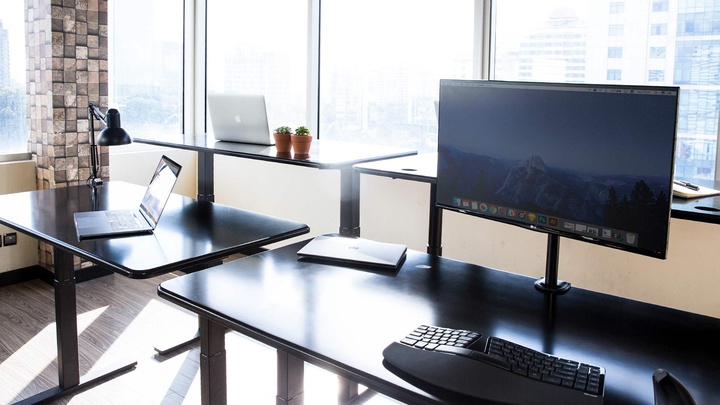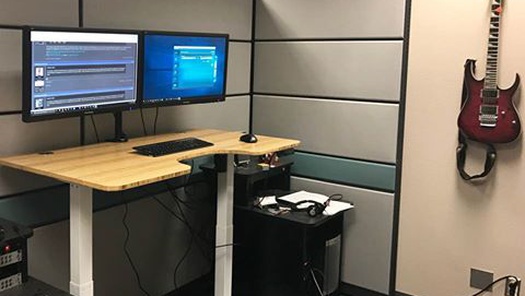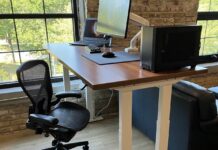In 2014, the Center for Disease Control said that the sedentary lifestyle that an increasing number of us lead today is now the leading cause of death in America and other post-industrial countries. This inspired Dr. James A. Levine, an obesity expert at the Mayo Clinic to coin the phrase “sitting is the new smoking” which has since caught on and spread like wildfire. Similarly, Apple CEO Tim Cook has called “sitting the new cancer” and famously works at a standing desk.
But how can just sitting be dangerous?
The operative word is “just”. Sometimes sitting but mostly being up and about isn’t so dangerous but “just sitting” is. For many of us, our day involves waking up and sitting on the car, in the bus, or on the subway. From there we get to our jobs where many of us sit, more or less uninterrupted, until it’s time to go home. Then it’s back to the seat on the car, bus, or subway to take us home where maybe we sit on the couch for a while reading or watching TV before going to bed so that the next day we can wake up well enough rested for another day of “just sitting”.
Sitting all day long means that almost all of our weight is being supported by the chair. This takes the weight off of our feet, for one, but also off of a whole series of muscles that run from our feet all the way up our trunks to the base of the neck. These muscles, called “postural muscles”, exert a gentle a gentle force on our bones throughout the day to bear our weight ant keep us upright – all the while helping our blood to flow and silently burning carbs and calories for energy. When we sit all day, however, these muscles don’t get used.
That means more than just the muscles not working, however. When we sit all day, it is also harder for our blood to circulate the way that it is supposed to. Taking all of these things into consideration, it’s easy to see how sitting all day can contribute to the slew of chronic diseases that have replaced infectious diseases as the number-one killer.

That’s why a couple of years ago “standing desks” came onto the scene
Sort of. Standing desks have been around since at least the late nineteenth century when they were proposed to cure indigestion, though some people believe that they are even older. While they have been around ever since, they have remained a fairly niche market, but are currently enjoying a boom in popularity as we become increasingly aware of our health.
Many early users of standing desks simply stacked things on top of each other, or made their work surface on the top of a bookcase in order to achieve the desired height, if they couldn’t afford to have a custom standing desk made for them.
The new popularity of standing desks means that they are more readily available now than ever before, but it also means that they have the benefit of modern technology. The original standing desks were not able to move up or down. These “static” desks were only able to meet the need of one person for one task in one stage of their life.
Later standing desks were of adjustable height, but required awkward adjustments and fitting different parts of the desk together in different ways in order to raise or lower it. These “manual” standing desks did the trick, but took a lot of time and effort to use and seldom left the items on the top of the desk remaining in their proper place throughout the course of the adjustment.
Many standing desks these days incorporate a small motor so that the desk can be raised or lowered so that one can sit at lunch, during meetings, or if the work is particularly long, and raised for the rest of the day to minimize time sitting down.
A standing desk can go from as low as 29 inches to as tall as 47 inches. These adjustments are powered by a quiet but powerful motor that can raise or lower your work surface at a rate of one inch per second and lift up to 220 pounds. That’s more than enough to move a hard drive and two or more standard monitors, not to mention the typical office clutter of paper, books, and writing utensils. The motor requires less than a watt to run and the chord plugs into a standard outlet.
 VIVO 32 inch Desk Converter, K Series, Height Adjustable Sit to Stand Riser, Dual Monitor and Laptop Workstation with Wide Keyboard Tray, Black, DESK-V000K
VIVO 32 inch Desk Converter, K Series, Height Adjustable Sit to Stand Riser, Dual Monitor and Laptop Workstation with Wide Keyboard Tray, Black, DESK-V000K
 Seville Classics AIRLIFT Pro S3 54" Solid-Top Commercial-Grade Electric Adjustable Standing Desk (51.4" Max Height) Table - Black/Walnut
Seville Classics AIRLIFT Pro S3 54" Solid-Top Commercial-Grade Electric Adjustable Standing Desk (51.4" Max Height) Table - Black/Walnut
Amazon
 Vari - VariDesk Pro Plus 36 - Desktop Standing Desk Converter - Adjustable Desk Riser with 11 Height Settings - Sit Stand Desk Dual Monitor Standing Desk Riser with Spring Loaded Lift (Black)
Vari - VariDesk Pro Plus 36 - Desktop Standing Desk Converter - Adjustable Desk Riser with 11 Height Settings - Sit Stand Desk Dual Monitor Standing Desk Riser with Spring Loaded Lift (Black)
The desk can be easily raised or lowered with user-intuitive arrow keys on a smart and simple interface just under the work surface. You can also custom program four unique heights, perfect for people who do a variety of different kinds of projects, or who might share their desk with coworkers or family members.
The mechanics of the desk are important, but so is the surface. The Home Edition’s “classic top” is 53 inches by 30 inches, though a smaller 47-inch by 26-inch and a larger 71-inch by 30-inch surface are also available. Desk surfaces also have two holes along the back end so that you can run wires from all of your desk-top appliances through the desk and into the wall for a cord-free, clutter-free look and maximum space utilization. All surfaces are 1-inch thick and made from solid wood with decorative and protective veneers that allow you to customize your desk to match the surrounding space. Available surfaces are Black, White, Bamboo, Oak, and Walnut.
Sturdy, metal, telescoping legs support your work surface whether it’s moving or not. The legs of the desk come in black, white, or grey, and you can mix and match the surface color and leg color when ordering. Assembly is easy and all of the necessary tools are included in the package.
Related post: How to Choose a Standing Desk for Tall People?



































